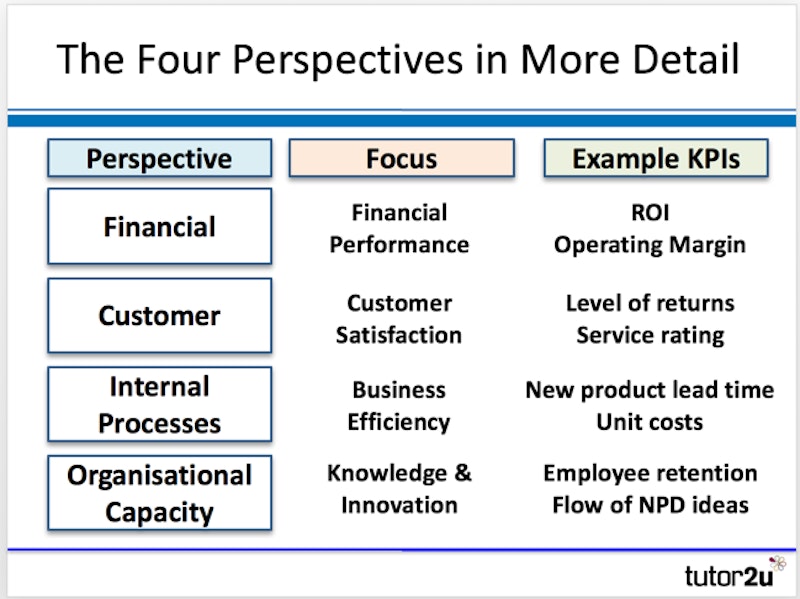Study Notes
Balanced Scorecard (Kaplan & Norton)
- Level:
- AS, A-Level, IB
- Board:
- AQA, OCR, IB, Eduqas
Last updated 18 Feb 2018
Kaplan & Norton's Balanced Scorecard model was developed in the early 1990's as an attempt to help firms measure business performance using both financial and non-financial data.
The aim of the Balanced Scorecard was "to align business activities to the vision and strategy of the business, improve internal and external communications, and monitor business performance against strategic goals."
The balanced scorecard provides a relevant range of financial and non-financial information that supports effective business management.
Background to the Balanced Scorecard:
- No single measures can give a broad picture of the organisation's health.
- So instead of a single measure why not a use a composite scorecard involving a number of different measures.
- Kaplan and Norton devised a framework based on four perspectives – financial, customer, internal and learning and growth.
- The organisation should select critical measures for each of these perspectives.


You might also like

A2 Business Aims and Objectives - Suggested Lesson Plans
6th September 2013
Operational Objectives (Revision Presentation)
Teaching PowerPoints
They'll Make a Profit When PIGSS Can Fly!
4th November 2015

Long-term Strategy & The Mittelstand - Sennheiser
15th August 2016

The Balanced Scorecard Explained
24th August 2016

AQA A Level Business Linear Worksheets
21st September 2017

Edexcel A Level Business Unit Assessment - Unit 1.5
16th October 2017
Daily Email Updates
Subscribe to our daily digest and get the day’s content delivered fresh to your inbox every morning at 7am.
Signup for emails